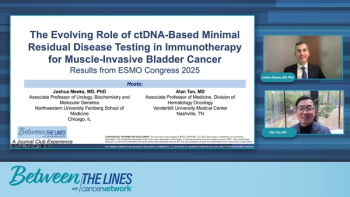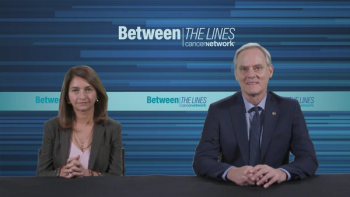
CRS Management Insights With Liso-Cel: Comprehensive Analysis From Real-World Data in 1579 Patients and Implications for Safe Clinical Practice
Panelists discuss how data from over 1500 patients receiving liso-cel shows consistent cytokine release syndrome (CRS) outcomes between clinical trials and real-world settings, with most CRS events occurring within the first 2 weeks and late-onset events being rare and manageable, supporting potential changes to monitoring protocols.
Episodes in this series

Video content above is prompted by the following:
A comprehensive analysis comparing 702 patients from pivotal liso-cel clinical trials with 877 patients from the CIBMTR real-world registry demonstrated remarkably consistent safety profiles across both cohorts. The CIBMTR (Center for International Blood and Marrow Transplant Registry) provides high-quality retrospective data through standardized forms and expert analysis, offering reliable real-world evidence to complement clinical trial findings. This comparison is particularly valuable given that real-world patients often have different characteristics than clinical trial participants.
Cytokine release syndrome (CRS) data showed consistently low rates of severe toxicity across both datasets, with grade 3+ CRS occurring in only 1% to 3% of patients. The median time to CRS onset was approximately 5 days post infusion, with events typically lasting 4 to 5 days. Importantly, CRS events occurring beyond 14 days post infusion were rare in both clinical trial and real-world settings, and when they did occur, they were predominantly low-grade events that resolved with standard management approaches.
These findings support the evolution toward more confident outpatient management of liso-cel patients, as the data demonstrates that despite differences in patient selection and treatment settings between clinical trials and real-world practice, safety outcomes remain consistent. The reassurance provided by this large dataset enables centers to optimize resource utilization, potentially treat more patients, and reduce health care costs while maintaining safety standards. This evidence-based approach to risk stratification suggests that intensive monitoring requirements may be safely modified after the initial high-risk period, particularly for products with favorable safety profiles like liso-cel.
Newsletter
Stay up to date on recent advances in the multidisciplinary approach to cancer.

















































































